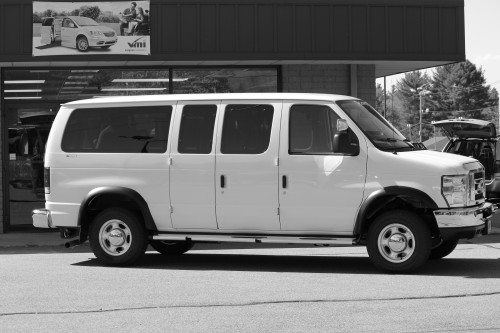If you’re ever in a accident in your wheelchair van and have insurance questions or need your to have repairs made contact the experts at the Mobility Center in Bridgewater, MA with your questions 508-697-6006

Buying insurance can be a complicated process. For those of us who haven’t spent a great deal of time thinking about insurance and how it works, purchasing insurance for a wheelchair van can be rather intimidating. So here is a little information about the way Ford wheelchair van insurance really works.
Information about Coverage
Your Ford wheelchair van insurance is made up of individual elements. When one talks about vehicle insurance, they’re actually referring to a combination of different forms of insurance with different purposes.
For example, you can buy liability insurance. That will pay for any damage you might cause if you have an accident. Liability insurance is a legal requirement. Bodily injury liability coverage will defray the medical expenses of anyone who may be injured by your vehicle in an accident.
Due to the high number of people who fail to meet their state-mandated legal obligations, many Ford wheelchair van drivers purchase uninsured or underinsured motorist insurance. This feature of a policy will protect you in the event that another driver collides with you and doesn’t have adequate coverage.
There is insurance designed to cover all of our own medical expenses if you’re in an accident and most new vehicle buyers purchase comprehensive policies that cover damage caused by vandalism, weather, and virtually any other mishap. If you are still making payments on a financed vehicle, the lender will generally require proof of comprehensive coverage as a term of the loan.
Those are only a few of the different forms of coverage that may be involved in covering your Ford. Different policies have different benefits and various insurance companies offer variations on the same theme. You may be interested in hearing about some of the other forms of protection they offer when insuring your wheelchair van.
Information of Rate Determinations
Now that we’ve discussed what you’re buying, we can explore why it costs so much! Most of us find insurance rather expensive and many wonder why different people may be subject to wildly different rates. There are a number of factors at play.
The most significant factor in setting insurance rates is the driver. Insurance companies evaluate data and look at multiple variables to determine how likely you are to be in an accident or to file a claim.
That’s why a 45-year old with a perfect driving record pays less for the same coverage than an 18-year old who’s already collected numerous. Your age is just one example of the many demographic variables influencing your rates. Your driving history is another.
Unfortunately, that means you’ll pay more than most people when you insure your Ford wheelchair van. Even if you are a fantastic driver, the overall statistics do indicate that drivers with disabilities are more likely to be involved in claims and accidents. US federal law prohibits insurance companies from discrimination based on disability, but they can consider those statistics when determining rates.
Your Ford wheelchair van will also influence how much you pay for your insurance. Again, the insurance companies base their rates on all available data and they have a very good idea of how much different vehicle types cost to repair and how likely they are to be involved in a claim. That’s why a sports car will cost more to insure than a dull four-door sedan.
It’s also another reason while you will be paying more than the average for your wheelchair van insurance. Wheelchair vans tend to cost a great deal to repair and data does indicate that they are more likely than many vehicle types to be involved in insurance claims. Additionally, wheelchair van owners need to be certain that their special equipment and modifications are insured. That drives up the price of their policies even more.
Insurance can be complicated and you need to be considerate when making decisions. Having at least a basic understanding of coverage types and the factors influencing the price of insurance should help.





